INTEGRATIVE BEE THERAPY (BVT) — APITHERAPY

WARNING: Side effects may include lower levels of stress and anxiety, increased productivity, higher sex-drive, drastic increase in functional lifespan, better memory, and a more pleasant personality.
As an Amazon Associate―#CommissionsEarned
CONTENT
|
Bee Therapy or Apitherapy |
|
| How does Apitherapy work? | |

Form, Function & Beauty
It is the understanding of the Honeybee in its symbiosis with mankind. It is the medicinal use of honeybee products. Using the products of the Hive helps us regain health. This includes the use of honey, propolis, pollen, royal jelly, beeswax, bee bread, bee venom, honeybees and drones. It is the Art and Science of Treatment and Holistic Healing through the honeybee wisdom and her products for the benefit of Mankind and all the Animal Kingdom.
Perhaps the most exotic product from the hive is bee venom. Bee venom has been used via bee-sting therapy for centuries in many cultures. Hippocrates and Confucius were familiar with its healing properties.
Eastern countries in particular have employed the curative abilities of bee venom, in fact, large clinics dedicated entirely to Bee Venom Therapy (BVT) or Bee Sting Therapy are common in Asia. Its popularity is rapidly increasing in Europe and in the Americas.
Honeybees are a subset of bees in the genus Apis, primarily distinguished by the production and storage of honey and the construction of perennial, colonial nests out of wax. Honeybees are the only extant members of the tribe Apini, all in the genus Apis. Currently, there are only seven recognized species of honeybee with a total of 44 subspecies,[1] though historically, anywhere from six to eleven species have been recognized. Honeybees represent only a small fraction of the approximately 20,000 known species of bees. Some other types of related bees produce and store honey, but only members of the genus Apis are true honeybees.
How does Apitherapy work?
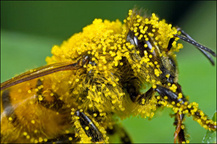
"Bee Venom Therapy (BVT) is a classic example of the homeopathic principal, which states that a substance that produces the symptoms of a disease is a cure for that disease. Rheumatic diseases result in swelling, pain and inflammation. A bee sting causes the same symptoms. The sting stimulates the immune system to relieve the inflammation caused by the bee venom, while relieving the symptoms of the rheumatic disease at the same time. Bee Venom Therapy stimulates the immune system through the hypothalamus, ituitary and adrenal glands. This therapeutic effect stimulates the immune system rather than suppressing it, completely contrary to the effects of many drugs." ~ Charles Mraz, Health and the Honeybee, Queen City Publications, 1995.
The actual healing process is still a bit of a mystery but ongoing research has identified a number of naturally occurring chemical compounds, which appear to work together in the body. One possible way that bee venom works its anti-inflammatory effects is by assisting the production of endogenous plasma cortisol in the human body. This is compared to synthetic cortisone without the side effects. Studies suggest that endogenous plasma cortisol is an important factor in the regulation of lymphocyte numbers [A small white blood cell (leukocyte) that plays a large role in defending the body against disease], and also exert their effect on stressful task performance via modulation of the amygdala. Circadian rhythm of endogenous plasma cortisol production and the hypothalamic-pituitary-adrenal axis are influenced by BVT.
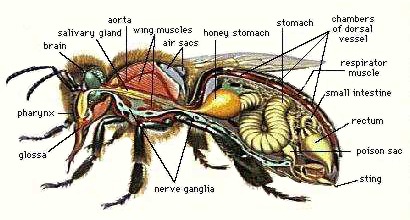
Bee venom has antioxidant qualities, which make it effective as a booster for the natural immune system.
Research has so far established that BVT stimulates the activity of the immune system so the body produces its own healing agents. There have been studies performed which have demonstrated the existence of compounds in bees venom with important and very relevant pharmacological properties.
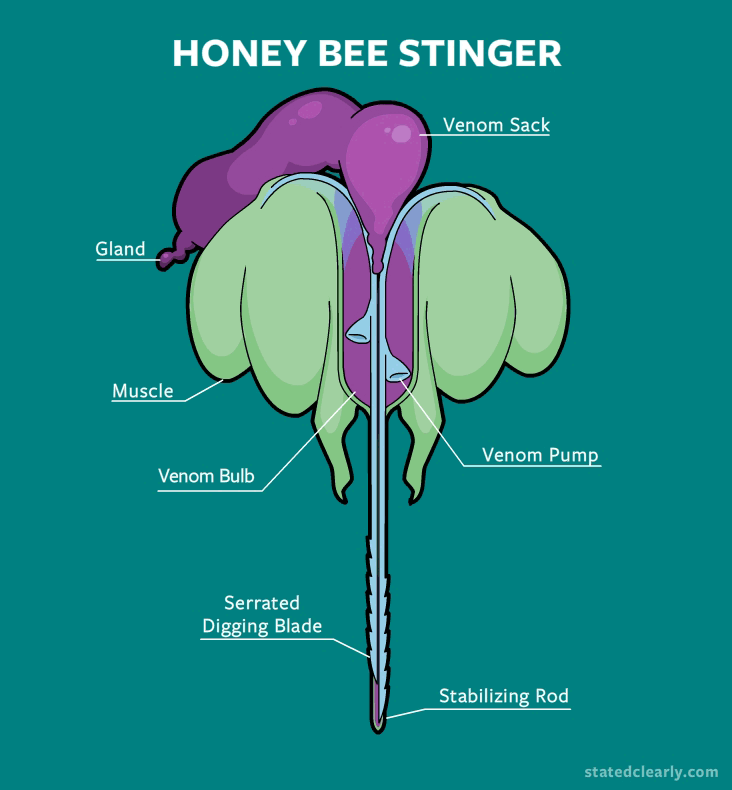
Amongst the most important of these seems to be Peptide-401, commonly referred to as the mast cell degranulating peptide of MCD for short. Researchers from Guys Hospital and the Kennedy Institute of Rheumatology published a report in 1973 about Peptide-401 in which they demonstrated it to be 100 times more effective as an anti-inflammatory agent than hydrocortisone. However, another compound that has come under great scrutiny is Melittin which forms the bulk of dried bee's venom.
Many studies have been performed around the world investigating its properties one of which demonstrated it to inhibit the formation of free radicals which are believed to contribute to joint damage. Mellitin has also been shown to indirectly stimulate the adrenal gland to produce the body's own cortisol by stimulating the pituitary gland to release ACTH.
Bee's venom contains a compound called apamin which enhances long term synaptic transmission and dopamine which helps increase motor activity. In addition there is a component of bee's venom called adolapin, also a neurotransmitter, which has been shown to have an analgesic effect which may be important for those who suffer pain as one of the symptoms. Phospholipase A2 & B, found in bee venom, selects only the cancer affected cells and destroys them. Healthy cells have a membrane which protects them and they are not affected in this process.
Bee Therapy
The film can be found at www.InnerWorldsMovie.com
Bee Venom Therapy and Multiple Sclerosis
By NeurologyChannel.com
The Multiple Sclerosis Association of America recently awarded a grant to immunologist Dr. John Santilli to study the effects of bee venom on MS patients.
It is understood that bee venom stimulates immune response with adrenalin and endogenous cortisol release. The exact mechanism for achieving these results is not well understood. The anti-inflammatory constituents, however, have been identified. Melittin is the most abundant of these substances and is known to be 100 times more potent than hydrocortisone.
Bee venom therapy, also known or apitherapy, has a large following of MS patients internationally. Many find it very useful for reducing the common MS symptoms of fatigue, spasm and instability. It is symptomatic treatment, however, and cannot impact the degeneration of neural tissue.
Live bee venom is thought to be significantly more potent and therapeutic. Most patients insist that the best results require 6 to 10 stings at least twice a week. It is also reported that any noticeable change in symptoms may require several months of consistent treatment.
Hello, I am Pat Wagner, also known as "The Bee Lady". You may have seen me on TV or in the newspapers around the world discussing how I treat my MS with bee venom. Thanks to Bee Venom Therapy (BVT), I am no longer a breathing corpse due to MS.
Pat Wagner Story
Par Wagner The Bee Lady
Here is a brief overview of my history with MS:
- I was diagnosed at Georgetown University Hospital in the Spring of 1970 with relapsing/remitting multiple sclerosis.
- Medications given to me included ACTH, Prednisone, Dalmane, Halcion, Valium (40 mgs./day), Seconal, Meprobamate, Dantrium, Dexedrine, Ditropan, Lomotil, Erythromycin, Keflex, Percocet, Bicodin, Tylenol #3, Fiorinal, Morphine, Indomethacin, and Timoptic eye drops.
- The course of my MS worsened over the years until the Spring of 1992 when I experienced my worst exacerbation in terms of duration and resistance to treatment.
- Two courses of high-dose Prednisone tapering over 6 weeks (80mgs. per day on down) did not help.
- I was prescribed Prozac for depression because I would cry "at the drop of a hat".
- The medical records read "Wheelchair bound, numb woman with bladder incontinence."
- Bladder surgery was done in March of 1992 but did not prove beneficial.
- Regarding mobility, more records read "as if her feet were nailed to the wheelchair. No movement since October, 1991."
- Then, on March 24, 1992, I received my first intentional sting from a honeybee.
- Besides being numb, my skeletal system felt as though it was made of ice.
- Twenty minutes after I received a sting on my left knee, my entire leg no longer felt bone cold. This was a very positive sign to me that there may be something to this bee sting thing.
- I got four more stings that evening and the next day my entire body was no longer cold except for my feet and hands.
- A noticeable increase in energy was evidenced in two days by my ability to stay awake longer throughout the day.
- The hearing in my right ear was lost due to MS, but regained within two weeks of the stings.
- My husband Ray became so hopeful for me that he bought a beehive, took over stinging me, and I changed his name to Sting Ray!
Although the treatment has not been a cakewalk, its effects have made me a new person. During a follow-up visit with my neurologist, who said there was "No hope", he called out my name and I walked over to him...
He did not recognize me because he was EXPECTING A CRIPPLE IN A WHEELCHAIR!
My experience with Multiple Sclerosis and Bee Therapy
by Donna Chandler
My name is Donna Chandler and I was diagnosed in November 1992 with Multiple Sclerosis. After using steroids for two weeks, I was still numb from the waist down, double vision, little use of the left arm and hand. Scared, you bet! Donald and I had two daughters to get through college. I wanted my life not this! I did not have time for a disease with no cure. No treatment to stop the progression. Disabled, no it couldn't happen to me!
A strange thing happened. Donald, a beekeeper, came home from a meeting one evening and announced, "Donna, they are using beestings to treat MS." I laughed. He loved me enough to keep seeking out information. I started calling people all over the country and found no negatives to this. What I found were results. Enough that I realized what did I have to lose? On March 28, 1993, I began my bee venom therapy. Being a Shock Trauma Tech., with our local rescue squad, I was aware of a possible reaction to the stings. We had a bee sting kit ready. Following the suggestions of Pat Wagner (the Beelady) and Charles Mraz (the godfather of beestings) we proceeded.
After 10 years and over 25,000 stings to see me you would not know that I have MS or anything else. My miracle yes! My last check-up-no progression not in 10 years! We did get our daughters through college, one married, and I plan to keep stinging and enjoying the rest of my life. I thank God for his bees, and my new found friends.
Bee Sting Therapy and Multiple Sclerosis
by Discovery fit&health
For centuries, honey, bee pollen, and bee venom have been used to treat a number of ailments that vary between chronic pain to skin conditions. Apitherapy, or the medical use of honeybee products that range from royal jelly to bee venom, was used by the ancient Egyptians as a homeopathic remedy for arthritis. Today, bee venom therapy, or bee sting therapy, has captured the attention of medical science as a potential homeopathic remedy for multiple sclerosis (MS) symptoms.
Bee venom therapy (BVT), or apitherapy, uses the stings of live bees to relieve symptoms of MS such as pain, loss of coordination, and muscle weakness. Stinging is not limited to any specific area of the body, as stings in different places seem to produce different results. Apitherapy researchers suggest that certain compounds in bee venom, namely melittin and adolapin, help reduce inflammation and pain, and that the combination of all the "ingredients" in bee venom somehow helps the body to release natural healing compounds in its own defense.
Given the fact that no major studies on BVT have been done so far, it is estimated that only about 50 U.S. physicians use it to treat MS or other diseases. And the evidence that BVT helps MS patients, although encouraging, remains anecdotal. Despite this, of the more than 250,000 cases of multiple sclerosis nationwide, thousands of patients are said to use bee venom as an alternative approach to the interferon, corticosteroids, and other drugs typically used. Word on BVT has spread to where the American Apitherapy Society says there are about 10,000 people providing this therapy - apitherapists, beekeepers, and acupuncturists, as well as those with no health background. Some patients even treat themselves. But the lack of medical training among most practitioners and the risk of dangerous allergic reactions to the treatment have raised concerns about BVT among the medical establishment.
Nonetheless, bee venom therapy has generated enough "buzz" that Georgetown University in Washington, D.C., has begun a one-year preliminary study, funded by the Multiple Sclerosis Association of America, to research apitherapy as a potential treatment. In the end, researchers hope to settle the debate whether bee venom should be considered a serious treatment for MS.
Bee Venom Kills HIV (SIDA) Virus
March 7, 2013 By Julia Evangelou Strait
Nanoparticles carrying a toxin found in bee venom can destroy human immunodeficiency virus (HIV) while leaving surrounding cells unharmed, researchers at Washington University School of Medicine in St. Louis have shown. The finding is an important step toward developing a vaginal gel that may prevent the spread of HIV, the virus that causes AIDS.
"Our hope is that in places where HIV is running rampant, people could use this gel as a preventive measure to stop the initial infection," says Joshua L. Hood, MD, PhD, a research instructor in medicine.
Bee Venom Kills HIV
The study appears in the current issue of Antiviral Therapy.
Bee venom contains a potent toxin called melittin that can poke holes in the protective envelope that surrounds HIV, and other viruses. Large amounts of free melittin can cause a lot of damage. Indeed, in addition to anti-viral therapy, the paper's senior author, Samuel A. Wickline, MD, the J. Russell Hornsby Professor of Biomedical Sciences, has shown melittin-loaded nanoparticles to be effective in killing tumor cells.

Nanoparticles (purple) carrying melittin (green) fuse with HIV (small circles with spiked outer ring), destroying the virus's protective envelope. Molecular bumpers (small red ovals) prevent the nanoparticles from harming the body's normal cells, which are much larger in size.
The new study shows that melittin loaded onto these nanoparticles does not harm normal cells. That's because Hood added protective bumpers to the nanoparticle surface. When the nanoparticles come into contact with normal cells, which are much larger in size, the particles simply bounce off. HIV, on the other hand, is even smaller than the nanoparticle, so HIV fits between the bumpers and makes contact with the surface of the nanoparticle, where the bee toxin awaits.
"Melittin on the nanoparticles fuses with the viral envelope," Hood says. "The melittin forms little pore-like attack complexes and ruptures the envelope, stripping it off the virus."
According to Hood, an advantage of this approach is that the nanoparticle attacks an essential part of the virus' structure. In contrast, most anti-HIV drugs inhibit the virus's ability to replicate. But this anti-replication strategy does nothing to stop initial infection, and some strains of the virus have found ways around these drugs and reproduce anyway.
"We are attacking an inherent physical property of HIV," Hood says. "Theoretically, there isn't any way for the virus to adapt to that. The virus has to have a protective coat, a double-layered membrane that covers the virus."
Beyond prevention in the form of a vaginal gel, Hood also sees potential for using nanoparticles with melittin as therapy for existing HIV infections, especially those that are drug-resistant. The nanoparticles could be injected intravenously and, in theory, would be able to clear HIV from the blood stream.
"The basic particle that we are using in these experiments was developed many years ago as an artificial blood product," Hood says. "It didn't work very well for delivering oxygen, but it circulates safely in the body and gives us a nice platform that we can adapt to fight different kinds of infections."
Since melittin attacks double-layered membranes indiscriminately, this concept is not limited to HIV. Many viruses, including hepatitis B and C, rely on the same kind of protective envelope and would be vulnerable to melittin-loaded nanoparticles.
While this particular paper does not address contraception, Hood says the gel easily could be adapted to target sperm as well as HIV. But in some cases people may only want the HIV protection.
"We also are looking at this for couples where only one of the partners has HIV, and they want to have a baby," Hood says. "These particles by themselves are actually very safe for sperm, for the same reason they are safe for vaginal cells."
While this work was done in cells in a laboratory environment, Hood and his colleagues say the nanoparticles are easy to manufacture in large enough quantities to supply them for future clinical trials.
REFERENCE
Hood JL, Jallouck AP, Campbell N, Ratner L, Wickline SA. Cytolytic nanoparticles attenuate HIV-1 infectivity. Antiviral Therapy. Vol. 19: 95 - 103. 2013
This work was supported by the Bill & Melinda Gates Foundation Grand Challenges Explorations grant number OPP1024642 'Fusogenic nanoparticles for combined anti-HIV/contraception.'
Washington University School of Medicine's 2,100 employed and volunteer faculty physicians also are the medical staff of Barnes-Jewish and St. Louis Children's hospitals. The School of Medicine is one of the leading medical research, teaching and patient care institutions in the nation, currently ranked sixth in the nation by U.S. News & World Report. Through its affiliations with Barnes-Jewish and St. Louis Children's hospitals, the School of Medicine is linked to BJC HealthCare.
Bee Venom Therapy and Lyme Disease
Clin Infect Dis 1997 Jul;25 Suppl 1:S48-51
The antimicrobial agent melittin exhibits powerful in vitro inhibitory effects on the Lyme disease spirochete
Lubke LL, Garon CF
Rocky Mountain Laboratories Microscopy Branch, National Institute of Allergy and Infectious Diseases, National Institutes of Health, Hamilton, Montana 59840, USA.
Borrelia burgdorferi (Bd) has demonstrated a capacity to resist the in-vitro effects of powerful eukaryotic and prokaryotic metabolic inhibitors. However, treatment of laboratory cultures on Barbour-Stoenner-Kelly medium with melittin, a 26-amino acid peptide contained in honeybee venom, showed immediate and profound inhibitory effects when they were monitored by darkfield microscopy, field emission scanning electron microscopy, and optical density measurements.
Furthermore, at melittin concentrations as low as 100 microg/mL, virtually all spirochete motility ceased within seconds of inhibitor addition. Ultrastructural examination of these spirochetes by scanning electron microscopy revealed obvious alterations in the surface envelope of the spirochetes. The extraordinary sensitivity of Bb to mellitin may provide both a research reagent useful in the study of selective permeability in microorganisms and important clues to the development of effective new drugs against Lyme disease.
Anti-cancer effect of bee venom in prostate cancer cells through
activation of caspase pathway via inactivation of NF-κB
By Mi Hee Park, Myoung Suk Choi, Dong Hoon Kwak, Ki-Wan Oh, Do Young Yoon,
Sang Bae Han, Ho Sueb Song, Min Jong Song, Jin Tae Hong
Article first published online: 17 NOV 2010
Abstract
BACKGROUND
Bee venom has been used as a traditional medicine to treat arthritis, rheumatism, back pain, cancerous tumors, and skin diseases. However, the effects of bee venom on the prostate cancer and their action mechanisms have not been reported yet.
METHODS T
Determine the effect of bee venom and its major component, melittin on the prostate cancer cells, apoptosis is analyzed by tunnel assay and apoptotic gene expression. For xenograft studies, bee venom was administrated intraperitoneally twice per week for 4 weeks, and the tumor growth was measured and the tumor were analyzed by immunohistochemistry. To investigate whether bee venom and melittin can inactivate nuclear factor kappa B (NF-κB), we assessed NF-κB activity in vitro and in vivo.
RESULTS AND CONCLUSIONS
Bee venom (1–10 µg/ml) and melittin (0.5–2.5 µg/ml) inhibited cancer cell growth through induction of apoptotic cell death in LNCaP, DU145, and PC-3 human prostate cancer cells. These effects were mediated by the suppression of constitutively activated NF-κB. Bee venom and melittin decreased anti-apoptotic proteins but induced pro-apoptotic proteins. However, pan caspase inhibitor abolished bee venom and melittin-induced apoptotic cell death and NF-κB inactivation. Bee venom (3–6 mg/kg) administration to nude mice implanted with PC-3 cells resulted in inhibition of tumor growth and activity of NF-κB accompanied with apoptotic cell death. Therefore, these results indicated that bee venom and melittin could inhibit prostate cancer in in vitro and in vivo, and these effects may be related to NF-κB/caspase signal mediated induction of apoptotic cell death. Prostate 71:801–812, 2011. © 2010 Wiley-Liss, Inc.
Bee venom melittin blocks neutrophil O2- production
Somerfield SD, Stach JL, Mraz C, Gervais F, Skamene E.
Bee venom (BV) is used in folk medicine to treat arthritis. It has antiinflammatory effects in animal models of rheumatic disease. We have studied the effects of BV on human neutrophil production of superoxide (O2-) and hydrogen peroxide, finding potent, nontoxic, dose-dependent production inhibition. Melittin, the major fraction of BV (50-70%) shows high-affinity calmodulin binding (Kd 3 nM). Drugs which bind calmodulin, such as trifluoperazine, inhibit O2- production by human neutrophils. For these reasons we have investigated the effect of melittin and other BV peptides on O2- production by human peripheral blood leukocytes.
We show that melittin inhibited O2- production both pre- and poststimulation in contrast to other BV fractions which were without effect. Oxygen radicals and their derivatives from inflammatory cells are implicated in the tissue damage occurring during inflammation. The inhibition is due to a direct effect on cells, and not indicator medium, dismutation, toxic or scavenging effects.
We propose that melittin may serve as a prototype small (mol wt 1280), cationic, amphipathic, calmodulin-binding, membrane-active, superoxide-production-inhibiting peptide, providing a model for peptides which could have a role in in vivo regulation of radical production. ~ PMID: 3011670 [PubMed - indexed for MEDLINE]
Education is one of the most important factors in the promotion and practice of Bee Therapy (apitherapy). As a result we encourage our readers to gather information before starting any kind of therapy or self-treatment with bee hive products like pollen, bee bread, honey, royal jelly, propolis, bee venom, bee brood or beeswax. Some individuals can be allergic to one of these products, thus sufficient knowledge of its use is essential.
Bee venom destroys Cancer cells in tests
By Ross Densley 08/11/09
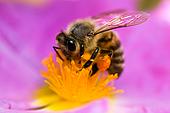
According to research done at Washington University in St Louis, bee venom is capable of being engineered to target tumours and cancer cells.
The study published in the Journal of Clinical Investigation details how the poisonous chemical melittin, found in bee stingers, was attached to 'nanoparticles' that were then used to attack and destroy cancer cells, leaving healthy cells intact. Dubbed 'nano-bees', these hybrid-particles were also effective in targeting pre-cancerous cells.
Professor Samuel Wickline who led the research hopes that the nano-bees could become a standard treatment in oncology, as it has fewer side effects than the likes of chemotherapy.
"The nano-bees fly in, land on the surface of cells and deposit their poisonous cargo."
The research was based on a series of tests done on two groups of mine that had cancerous tumors. One group of mice had melanoma skin cancer, whilst the other had been implanted with human breast cancer cells.
After four to five injections of the nano-bees, the breast-cancer tumors were 25 per cent smaller, and the melanoma tumors were 88 per cent smaller, compared with untreated mice.
Despite the high toxicity of the bee venom, the mice suffered few side-effects and there appeared to be little damage to non-cancerous cells.
If the bee venom had been injected into the bloodstream in its normal form it would have lead to the destruction of red blood cells. However, following the injection of the modified nano-bees the blood count of mice was normal, and they showed no signs of organ damage.
"It's like molecular Velcro," Professor Wickline said. "The toxin doesn't come off the bee until it finds its target."
The team hopes to conduct human trials next year. ~ by NGP - Next Generation Pharmaceutical
Bee venom suppresses PMA-mediated MMP-9 gene activation via JNK/p38 and NF-kappaB-dependent mechanisms
J Ethnopharmacol. 2010 Feb 17;127(3):662-8. Epub 2009 Dec 5.
Cho HJ, Jeong YJ, Park KK, Park YY, Chung IK, Lee KG, Yeo JH, Han SM, Bae YS, Chang YC.
Research Institute of Biomedical Engineering, Department of Medicine, Catholic University of Daegu School of Medicine, Daegu, Republic of Korea.
Abstract
ETHNOPHARMACOLOGICAL RELEVANCE ─ Bee venom has been used for the treatment of inflammatory diseases such as rheumatoid arthritis and for the relief of pain in traditional oriental medicine.
AIM OF THE STUDY ─ The purpose of this study is to elucidate the effects of bee venom on MMP-9 expression and determine possible mechanisms by which bee venom relieves or prevents the expression of MMP-9 during invasion and metastasis of breast cancer cells. We examined the expression and activity of MMP-9 and possible signaling pathway affected in PMA-induced MCF-7 cells.
MATERIAL AND METHODS ─ Bee venom was obtained from the National Institute of Agricultural Science and Technology of Korea. Matrigel invasion assay, wound-healing assay, zymography assay, western blot assay, electrophoretic mobility shift assay and luciferase gene assay were used for assessment.
RESULTS ─ Bee venom inhibited cell invasion and migration, and also suppressed MMP-9 activity and expression, processes related to tumor invasion and metastasis, in PMA-induced MCF-7 cells. Bee venom specifically suppressed the phosphorylation of p38/JNK and at the same time, suppressed the protein expression, DNA binding and promoter activity of NF-kappaB. The levels of phosphorylated ERK1/2 and c-Jun did not change. We also investigated MMP-9 inhibition by melittin, apamin and PLA(2), representative single component of bee venom. We confirmed that PMA-induced MMP-9 activity was significantly decreased by melittin, but not by apamin and phospholipase A(2). These data demonstrated that the expression of MMP-9 was abolished by melittin, the main component of bee venom.
CONCLUSION ─ Bee venom inhibits PMA-induced MMP-9 expression and activity by inhibition of NF-kappaB via p38 MAPK and JNK signaling pathways in MCF-7 cells. These results indicate that bee venom can be a potential anti-metastatic and anti-invasive agent. This useful effect may lead to future clinical research on the anti-cancer properties of bee venom.
Copyright 2009 Elsevier Ireland Ltd. All rights reserved.
PMID: 19969058 [PubMed - indexed for MEDLINE]
Publication Types, MeSH Terms, Substances
Honey, Propolis Used to Treat Diabetic Foot Wound
Apitherapy News, Tuesday, January 09, 2007
Combined Use of Honey, Bee Propolis and Myrrh in Healing a Deep, Infected Wound in a Patient with Diabetes Mellitus
(British Journal of Biomedical Science, 2006; 63(4); 171-173)

Diabetes mellitus is a group of diseases characterised by high levels of blood glucose resulting from defects in insulin production, insulin action, or both. Diabetes can be associated with serious complications including diabetic foot disease. Diabetic foot disease is estimated to affect 15% of people with diabetes.
1 Wound healing is a process that involves inflammation, proliferation/regeneration and finally remodeling. The normal orderly pattern is disrupted in chronic non-healing wounds, which are characterised by decreased levels of growth factors and increased protease activity. Wound healing is affected by serum albumin, tissue oxygenation, infection, hyperglycaemia, cytokines and proteases.
2 A marker of non-healing wounds may be the prolonged presence of extracellular matrix molecules in the dermis.
3 Other markers and potential mediators include increased levels of transforming growth factor (TGF)-b3,4 proteolytic factors such as matrix metalloproteinases,5 and the absence of IGF-I.6…
Effect of Bee Venom treatment in sows with Oligogalactic Syndrome postpartum
(lactation disorder); Choi SH et al. Am J Chin Med, 2003, 31(1), 149 - 55
The objective of this study was to determine the clinico-therapeutic effect of worker honeybee venom in sows with oligogalactic syndrome postpartum. Comparison between bee venom- and drug-treated groups was our main concern in the present study. Sows after parturition were assigned to bee venom and drug-treated groups, respectively.
In the bee venom-treated group, 22 sows were bee-acupunctured once a day for 3 consecutive days. Honeybees (Apis mellifera L.) for bee acupuncture were about 15 days old after metamorphosis. Live bees were used to sting the acupoints known as yang-ming (ST-18, 1.5 cm lateral to the base of the last two pairs of teats) and jiao-chao (GV, at the indentation between the base of tail and the anus). In the drug-treated group, 20 sows were intramuscularly injected with a standard dose of penicillin G (400,000 IU/head) once a day for 3 consecutive days.
On post-treatment day 4, 85.0% of the drug-treated group and 90.9% of the bee venom-treated group recovered from oligogalactic syndrome postpartum. The result suggested that apitherapy using worker honeybee is an effective treatment for sows with oligogalactic syndrome postpartum.
New Mexico Honey Beats Manuka at Fighting MRSA
Apitherapy News, Friday, April 06, 2012
Regional Honey and Ca-MRSA
(Community Acquired Methicillin Resistant Staphylococcus Aureus)
American Bee Journal, April 2012

MRSA infections are a well recognized problem in everyday medical practice. Many of these infections involve the skin and can form abscesses. Occasionally, MRSA infections can become invasive and involve the central nervous system, bones, lungs and other body rgans. Currently these infections have become resistant to antibiotics that previously were effective. A major concern of the medical community is that resistance patterns might spread to antibiotics in current use such as Vancomycin and others.
Given the growing problem of antibiotic resistance, a research group in San Juan County New Mexico over the last 9 months has been exploring the role of honey in the treatment of these skin infections. The group's members are R. Stephen Rankin, M.D. (pediatrician at Pinon Family Practice), Joe Pope, M.D. (family physician at Pinon Family Practice), Beth Phillips (Four Corners Research Associates), Don Hyder, PHD. (biologist at San Juan College), and Mary Doshi, MLS, (ASCP) Director, Program in Medical Technology San Juan College. This group represents a collaboration of Pinon Family Practice, San Juan College, and San Juan Regional Medical Center. Dr. Pope and Dr. Rankin are also beekeepers and have a combined experience of over 20 years…
In recent years, in vitro studies have been done on natural honey samples from Northern Ireland and various locations in Africa. These samples have been tested against Ca-MRSA isolates and other Staphylococcal specimens. Results were favorable demonstrating activity against these organisms.
From the United States no testing of honey has been done for regional samples from the Four Corners area. Our in vitro testing, in which we impregnated sterile paper discs with five different honey varieties and the antibiotic Vancomycin, indicates that the varietal honey from Northwest New Mexico has favorable bactericidal activity against MRSA.
In viewing the accompanying photo note the dark areas around each sample. These dark areas, also known as zones of inhibition, represent bactericidal activity. This means the organism, in this case MRSA, is killed as it is exposed to the substance. Vancomycin is the prototypical intravenous antibiotic used in the hospital setting for more serious MRSA infections. Note the favorable zone of inhibition around its disc. In comparison, Lot 1 and Lot 2—the samples of local honey from hives in the vicinity of Farmington, New Mexico—also show a large zone of inhibition. In contrast, the New Zealand Manuka Honey and two samples of clover and wildflower honey from a Farmington health food store show lesser signs of antimicrobial activity as demonstrated by the smaller dark areas around these samples. Also, note the control disc which does not show any zone of inhibition.
The bees and hives from which this Lot 1 and Lot 2 honey come have been managed in a certified naturally grown manner. That is, at no time during the year are the bees exposed to antibiotics, miticides, or chemical treatments of any kind. The emphasis is on raising or purchasing queens (and subsequent worker progeny) that are resistant to mites and diseases. This practice follows the approach of queen breeders such as Mark Spitzig and Melanie Kirby from New Mexico, Dr. Marla Spivak and Gary Reuter from the University of Minnesota, and John Kefuss from France to mention a few examples.
The hives are located in the vicinity of Farmington, New Mexico. The principal honey flow is in late June through most of July. The honey is dark and apparently the nectar source is a wild drought-resistant weed that blooms every year at this time. There is very little exposure to cultivated fields such as clover…
Composition of Bee Venom
The following table expresses the composition of venom from a honeybee worker as stated in the findings of two separate studies (Dotimas and Hilder, 1987 (1); Shipolini, 1984 (2)). Hilder, 1987 (1); Shipolini, 1984 (2)). These components were measured as a percentage of dry venom, with water makes up approximately 88% of venom before drying. Class of Molecules Component % of Dry Venom (1) % of Dry Venom (2):
2.0
|
Class of Molecules |
Component |
% of Dry Venom (1) |
% of Dry Venom (2) |
|
Enzymes |
Phospolipase A2 |
10-12 |
10-12 |
|
Hyaluronidase |
1-3 |
1.5-2.0 |
|
|
Acid phosphomonoesterase |
1.0 |
||
|
Lysophopholipase |
1.0 |
||
|
a-glucosidase |
0.6 |
||
|
Other Proteins |
Melittin |
50 |
40-50 |
|
Peptides |
Apamine |
1-3 |
3 |
|
Mast Cell Degranulating Peptide (MCD) |
1-2 |
||
|
Secapin |
0.5-2.0 |
0.5 |
|
|
Procamine |
1-2 |
1.4 |
|
|
Adolapin |
1.0 |
||
|
Protease inhibitor |
0.8 |
||
|
Tertiapin |
0.1 |
0.1 |
|
|
Small peptides
|
13-15 |
||
|
Physiologically Active |
Histamine |
0.5-2.0 |
0.6-1.6 |
|
Amines |
Dopamine |
0.2-1.0 |
0.13-1.0 |
|
Noradrenaline |
0.1-0.5 |
0.1-0.7 |
|
|
Amino Acids |
t-aminobutyric acid |
0.5 |
0.4 |
|
a-amino acids |
1.0 |
||
|
Sugars |
Glucose and fructose |
2 |
|
|
Phospholipids |
5 |
||
|
Volatile compounds |
4-8 |
In 1982 Bulgarian researchers Shkendrov and Koburova isolated another peptide in bee venom called adolapin and showed that it had anti-inflammatory and analgesic properties.
In April 1993 Chen, Chen and Sun of the Nanjing Institute of Biochemical Pharmacy in China not only noted the anti-inflammatory properties of bee venom but also demonstrated its analgesic effects.
In July 1990 Ziai, Russek, Wang, Beer, Blume from the American Cyanamid Company, Pearl River, New York, USA commented that peptide-401 displays striking immunological and pharmacological activities. They also demonstrated this MCD-peptide significantly lowered blood pressure in rats.
Conditions Treated by Apitherapy
The American Apitherapy Society informs that the following are conditions that are most often addressed with apitherapy:
- IMMUNE SYSTEM DYSFUNCTION OR PROBLEMS
- Multiple Sclerosis (MS)
- Arthritis
- Hay fever
- NEUROLOGIC PROBLEMS
- ALS (Lou Gehrig's Disease)
- Multiple Sclerosis (MS)
- Shingles
- Scar pain
- MUSCULOSKELETAL PROBLEMS
- Arthritis
- Gout
- Tendonitis, bursitis
- Spinal pain
- INFECTIOUS PROBLEMS
- Bacterial, viral, and fungal illnesses
- Lyme Disease
- TRAUMAS
- Wounds, acute and chronic
- Burns
- Sprains
- Fractures
- TUMORS
- Benign
- Malignant (cancer)
Apitherapy has been also used for over 500 diseases and/or conditions.
Following is a sample: www.apitherapy.com
- ALLERGIES (ALLERGOLOGY)
- BV Allergy
- Bee Pollen Allergy
- Hay fever
- Ragweed polinosis
- CARDIOVASCULAR DISEASES (CARDIOLOGY)
- Acute rheumatic carditis
- Angina pectoris
- Arrhythmias
- Artheritis obliterans
- Artheriosclerosis
- Atherosclerosis
- Atherosclerotic Arteritis of the Inferior Limbs
- Capillary fragility
- Cardiac diseases (non-specific)
- Cerebral atherosclerosis
- Cerebral Trombosis
- Coronary Heart Diseases
- Flebitis
- Heart insufficiences
- Haemorrhagies of vascular origin
- High Blood Pressure
- Liver congestion
- Peripheral Ischemic Degenerative Syndrome
- Peripheral Vascular Diseases
- Raynaud's Disease
- Slow peripheral blood flow
- Varicose ulcer
- Varicosis
- BLOOD DISEASES (HEMATOLOGY)
- Anemia
- Coagulation diseases with aplasia
- Haemorrhagic gingivitis
- Hyperlipidaemia
- CANCERS (ONCOLOGY)
- Basal cell carcinoma
- Chemotherapy (during)
- Gynaecologic cancer (non-specific)
- Lymphoma
- Malignant melanoma
- Mammary tumors
- EYE DISEASES (OPHTHALMOLOGY)
- Cataract
- Iridocyclitis
- Iritis
- Microbial inflammatory affections of the fore-pole of the eye
- Microbial inflammatory affections of the ocular annexes
- Ocular burns
- Ocular traumas
- Ocular anexes burns
- Ocular anexes traumas
- Status post-ophthalmic herpes
- Virus inflammatory affections of the fore-pole of the eye
- Virus inflammatory affections of the ocular annexes
- ENDOCRINE SYSTEM DISEASES (ENDOCRINOLOGY)
- Adrenal glands diseases
- Cortisol Secretion Dysfunction
- Hyperthyroidism
- Hypofoliculinic Disfunctional Syndromes
- Hypoglycemia
- Insufficiency of sexual hormones
- Irregular Periods
- Menstrual Cramps
- Mood Swings
- Premenstrual Syndrome (PMS)
- DIGESTIVE APPARATUS DISEASES (GASTRO-ENTEROLOGY, HEPATOLOGY)
- Affections of the liver cells
- Chronically hepatitis
- Chronically liver diseases
- Colitis (sub-acute and chronic)
- Constipation
- Gastro-duodenal ulcer
- Gastric H. pylori colonization
- Liver cirrhosis
- GENITAL APPARATUS DISEASES (GYNECOLOGY)
- Cervix erosions
- Hypofoliculinic Dysfunctional Syndromes
- Irregular Periods
- Leucorrhoea
- Menstrual Cramps
- Menstrual Cramps
- Mood Swings
- Premenstrual Syndrome (PMS)
- Sexual dynamic weakness
- Trichomonas vaginalis
- Vaginal sores (post-surgical)
- Vaginitis
- Vegetations
- Wounds (hardly healing) after gynecological surgical operations
- IMMUNE SYSTEM DISEASES (IMMUNOLOGY)
- AIDS
- B-Cell Enhancement
- Multiple Sclerosis (MS)
- Systemic Lupus Erithematosus
- T-Cell Suppression
- KIDNEY DISEASES (NEPHROLOGY)
- Chronically kidney insufficiency
- Kidney diseases (non-specific)
- MENTAL DISEASES (PSYCHIATRY)
- Alcohol addiction
- Oligophrenia
- Schizophrenia
- MUSCULOSKELETAL SYSTEM DISEASES
(RHEUMATOLOGY, MYOLOGY, OSTEOLOGY)- Acute and Chronic Bursitis
- Ankylotic Spondyilarthritis
- Ankylotic Spondylitis Deformans
- Arthritis
- Arthrosis
- Fibrositis
- Juvenile Arthritis
- Lateral Epicondylitis (Tenis Elbow)
- Muscular Rheumatism
- Muscle Tonus Problems Ligament Troubles
- Myalgia
- Myositis
- Osteoarthritis
- Periarthritis of the shoulder with calcifications
- Poliarthritis Deformans
- Psoriatic Arthritis
- Reduced Muscle Force (Weak Muscles = Hypotonia)
- Rheumatic afflictions of muscles, nerves and articulations
- Rheumatic diseases (non-specific)
- Rheumatoid arthritis
- Scheuermann's Disease (osteochondrosis)
- Spondyloarthrosis (Clinical Arthrosis)
- Traumatic Arthritis
- NERVOUS SYSTEM DISEASES (NEUROLOGY)
- Asthenia
- Cerebral Trombosis
- Chronic Pain Syndrome
- Dupuytren's Contracture
- Insomnia
- Lumbago Neuralgia
- Lumbar back pains
- Migraine
- Multiple Sclerosis (MS)
- Neuralgies
- Neurasthenia
- Neuritis
- Neurotic Disorders
- Paresthesia related to Spondyloarthrosis Meralgia Paresthetica
- Peripheral Neuritis
- Post-Herpetic Neuralgia
- Sciatica
- Zona-zoster
- NOSE, EAR, THROAT DISEASES (OTO-RHINO-LARYNGOLOGY)
- Acute inflammations of the middle ear
- Acute rhino-pharyngo-tonsilitis
- Acute tonsilitis
- Chronic allergical rhinitis
- Chronic allergo-infected hyperplastic rhinosinusitis
- Chronic hypertrophic rhinitis
- Chronic hypotrophic rhino-pharyngitis
- Chronic laryngitis
- Chronic medium suppurating otitis
- Chronic otitis with acute mesotympanitis
- Chronic pharyngitis
- Chronic rhino-pharyngitis
- Chronic rhino-pharyngo-tonsilitis
- Chronic simple atrophic rhino-pharyngitis
- Cochleo-vestibular syndrome
- Diffuse external otitis
- External diffuse eczematous otitis
- Hypohearing
- Influenza infection
- Mesotympanitis
- Osena
- Pharyngitis
- Phonasthenia
- Post-traumatic pharyngitis
- Sore throat
- Traumatic perforation of tympanum
- NUTRITION AND METABOLIC DISEASES
- Abnormal cholesterol and triglycerides
- Anorexia (lack of appetite)
- Diabetes
- Dystrophies (dystrophy to children suffering of oligophrenia)
- General Metabolic Diseases (non-specific)
- Hyperlipidaemia
- Hypoglycemia
- RESPIRATORY APPARATUS DISEASES (PNEUMOLOGY)
- Allergic rhinitis (hay fever)
- Angina
- Asthmatic bronchitis
- Bronchial asthma
- Bronchiectasis
- Bronchitis
- Chronically cough
- Chronic non-specific diseases of lungs
- Cough
- Inflammatory diseases of the upper respiratory tract
Influenza infection - Laryngitis
- Non-specific chronic pneumonia
- Non-specific endo-bronchitis
- Non-specific pneumonia
- Pulmonary tuberculosis
- Rhinitis
- Tracheitis
- Tuberculosis
- SKIN DISEASES (DERMATOLOGY)
- Acne
- Bedsores
- Breast skin sores
- Bruises ("Blue" skin after contusion)
- Burns and scalds
- Canker diseases
- Chronic furuncles
- Decubitus ulcer
- Degranulated Wounds
- Eczema
- Epidermophyses
- Erysipelas
- Folliculites
- Furunculosis
- Hair Loss
- High Sensitiveness
- Hydradenites
- Hyperkeratosis
- Infected skin lesions
- Intertrigo (infants)
- Low Sensitiveness
- Lupus Erythematosus
- Melanoma
- Moles
- Mycosis Fungoides
- Neurodermitis
- Parasitory sicosis
- Psoriasis
- Pyodermites
- Radiodermatitis
- Scars
- Scleroderma
- Seborrheic dermatitis
- Shank (calf) chronic ulcers
- Skin tuberculosis (adjutant)
- Spots alopecia
- Total alopecia
- Topical Ulcers
- Tricophysis
- Trophic Ulcers
- Varicose ulcer
- Warts
- Wounds
- Zona-zoster
- SEXUAL DISEASES (SEXOLOGY)
- Benign prostatic hypertrophy
- Chronic prostatitis
- Insufficiency of sexual hormones
- Prostate and seminal vesicles inflammation
- Prostate inflammation (prostatitis)
- Sexual dynamic weakness
- TEETH AND MOUTH DISEASES (STOMATOLOGY, DENTISTRY)
- Canker diseases
- Caries
- Chronic peripheral parodontopathies
- Common chronic recurring aphtae
- Gingivitis
- Glossodynia
- Gum disorders
- Haemorrhagic gingivitis
- Labial cyclic recurring herpes
- Lip diseases
- Moniliasis
- Stomatitis after amygdalitis operation
- Ulcer stomatitis
- Ulceronecrotic stomatites
- VIRAL DISEASES (VIROLOGY)
- AIDS
- Epstein Barr Virus Disease
- Flu
- Mononucleosis
- Post-Herpetic Neuralgia (Shingles)
- Warts
- DISEASES, CONDITIONS WHICH AFFECTS THE WHOLE BODY
- Anorexia
- Convalescence
- Fever
CHARLES MRAZ
In the USA Bee Venom Therapy became better known in 1934 after Charles Mraz discover the benefits of Bee Venom. At the age of 28, he used BVT on himself on his arthritis. According to his experience, BVT cured his arthritis. He was a pioneer on Apitherapy all throughout his life.
Charlie was recognized in the United States as the pioneer of bee venom therapy: the use of bee stings to treat various disorders, primarily autoimmune diseases. In addition to initiating clinical research with scientists at the Sloan-Kettering Institute and the Walter Reed Army Institute, he established the standard for purity for dried whole venom for the U.S. Food and Drug Administration and was the supplier of venom to pharmaceutical companies throughout the world.
Born on July 26, 1905, he died on September 13, 1999 at the age of 94.
Charles Mraz – Pioneer on Apitherapy
APITHERAPY SUGGESTIONS
The medical efficacy of bee hive product (Apitherapy) has not been approved by many countries yet. This information makes no claims about the safety or efficacy of the therapeutically use of any honeybee products. If you have any medical problem always consult your own physician first!
SAFETY PROTOCOL for Bee Venom Therapy (BVT) and all Bee Hive Products
Before consuming or using the Bee Hive products like Pollen, Propolis, Royal Jelly, Bee Bread, Wax, Honey and Bee Venom, one must conduct a tolerance test for hypersensitivity to make sure that you are not allergic in any way.
If you take any Beta blockers or β-blocker (Beta-Adrenergic Blocking Drugs) DO NOT USE BEE VENOM. Some β-blocker commonly used brand names:
|
In the United States |
||
|
Betapace (sotalol) |
Levatol (penbutolol) |
Alprenolol |
|
Blocadren (timolol) |
Lopressor (metoprolol) |
Amosulalol |
|
Brevibloc (esmolol) |
Normodyne (labetalol) |
Atenolol |
|
Cartrol (carteolol) |
Sectral (acebutolol) |
Landiolol |
|
Coreg (carvedilol) |
Tenormin (atenolol) |
Levobunolol |
|
Corgard (nadolol) |
Toprol-XL (metoprolol) |
Mepindolol |
|
Inderal (propranolol) |
Trandate (labetalol) |
Metipranolol |
|
Inderal-LA (propranolol) |
Visken (pindolol) |
Nebivolol |
|
Kerlone (betaxolol) |
Zebeta (bisoprolol) |
Oxprenolol |
|
Tilisolol |
||
|
In Canada |
||
|
Apo-Atenolol (atenolol) |
Inderal (propranolol) |
Sectral (acebutolol) |
|
Apo-Metoprolol (metoprolol) |
Lopressor (metoprolol) |
Sotacor (sotalol) |
|
Apo-Propranolol (propranolol) |
Monitan (acebutolol) |
Tenormin (atenolol) |
|
Apo-Timol (timolol) |
Novo-Atenol (atenolol) |
Trandate (labetalol) |
|
Betaloc (metoprolol) |
Novometoprol (metoprolol) |
Trasicor (oxprenolol) |
|
Blocadren (timolol) |
Novo-Pindol (pindolol) |
Visken (pindolol) |
|
Corgard (nadolol) |
Novo-Timol (timolol) |
|
If you take any Psychotropic Drugs DO NOT USE BEE VENOM. Some Psychotropic medications are:
|
Celexa (citalopram) |
Luvox (fluvoxamine) |
Prozac (fluoxetine) |
|
Lexapro (escitalopram) |
Paxil (paroxetine) |
Zoloft (sertraline) |
If you are a Diabetic Insulin-dependent (Type 1) DO NOT USE BEE VENOM.
Type 1 Diabetes Mellitus, formerly called juvenile diabetes or insulin-dependent diabetes, is usually first diagnosed in children, teenagers, or young adults. With this form of diabetes, the beta cells of the pancreas no longer make insulin because the body's immune system has attacked and destroyed them. Treatment for type 1 diabetes includes taking insulin and possibly another injectable medicine, making wise food choices, being physically active, taking aspirin daily—for some—and controlling blood pressure and cholesterol.
Type 2 Diabetes Mellitus, formerly called adult-onset diabetes or noninsulin-dependent diabetes, is the most common form of diabetes. People can develop type 2 diabetes at any age—even during childhood. This form of diabetes usually begins with insulin resistance, a condition in which fat, muscle, and liver cells do not use insulin properly. At first, the pancreas keeps up with the added demand by producing more insulin. In time, however, it loses the ability to secrete enough insulin in response to meals. Being overweight and inactive increases the chances of developing type 2 diabetes. Treatment includes using diabetes medicines, making wise food choices, being physically active, taking aspirin daily—for some—and controlling blood pressure and cholesterol.
Some women develop Gestational Diabetes Mellitus during the late stages of pregnancy. Although this form of diabetes usually goes away after the baby is born, a woman who has had it is more likely to develop type 2 diabetes later in life. Gestational diabetes is caused by the hormones of pregnancy or a shortage of insulin.
If you use Adrenocortical Steroids (Corticosteroid) which is a steroid hormone produced by the adrenal cortex or synthesized; administered as drugs they reduce swelling and decrease the body's immune response DO NOT USE BEE VENOM. They include:
|
betamethasone |
hydrocortisone acetate |
Methrotrexate |
|
dexamethasone |
loteprednol etabonate |
Prednisolone |
|
fluorometholone |
rimexolone |
triamcinolone |
If you use Non-steroidal Anti-inflammatory Drugs (NSAIDs) is a drug that suppresses inflammation in a manner similar to steroids, effective in alleviating pain and fever. They act by inhibiting the synthesis of prostaglandins, leukotrienes, and other compounds that are involved in the inflammatory process DO NOT USE BEE VENOM. They include:
|
Acetaminophen |
Feldene |
Naprosyn |
|
Advil |
Ibuprofen |
Naproxen |
|
Aleve |
Indocin |
Nuprin |
|
Cataflam |
Ketoprofen |
Tylenol |
|
Celebrex |
Midol |
Voltaren |
|
Diclofenac |
Motrin |
If you have Liver or Adrenal Glands issues DO NOT USE BEE VENOM.
Before doing anything, obtain a bee sting kit and learn how to use it. Includes an antihistamine and an epinephrine auto-injector. Be sure to know how to use it, just for emergencies.
If you are taking any β-blocker DO NOT USE EPINEPHRINE.
If you have high blood pressure (hypertension), congestive heart failure (CHF), abnormal heart rhythms (arrhythmias), or chest pain (angina), DO NOT USE EPINEPHRINE.
If you use Monoamine Oxidase Inhibitors (MAOES) which are a class of antidepressants used for the treatment of depression, DO NOT USE EPINEPHRINE.
Some of the Unselective MAO-A and MAO-B inhibitors:
2C-T-21 (also occasionally implicated in accidental overdose)
2C-T-7 (occasionally implicated in accidental overdose)
4-MTA (very dangerous due to its serotonin-releasing properties and sometimes fatal)
5-MeO-AMT (weakly; 5-MeO-AET is likely to be an MAOI as well)
AET (Monase) (weakly)
Amphetamine (Adderall, Dexedrine, Vyvanse) (weakly in high doses)
AMT (Indopan) (weakly)
Befloxatone
Benmoxin (Nerusil, Neuralex)
Brofaromine (Consonar)
Catechin (found in cat's claw)
Cimoxatone
Clorgyline
Curcumin (found in turmeric)
Desmethoxyyangonin (found in kava kava)
Echinopsidine Iodide (Adepren)
Epicatechin (also found in cat's claw)
Fo-Ti (active constituent unknown)
Furazolidone (Furoxone, Dependal-M) (an antibiotic)
Ginkgo (active constituent unknown)
Harmala alkaloids (found in tobacco, Syrian rue, passion flower, and ayahausca)
Harmaline
Harmine
Hydralazine (Apresoline) (an anti-hypertensive agent and hydrazine derivative)
Hydrazines
Hydroxytyrosol (found in olive oil)
Iproclozide (Sursum)
Iproniazid (Marsilid, Iprozid, Ipronid, Rivivol, Propilniazida)
Isocarboxazid (Marplan)
Lazabemide
Linezolid (Zyvox, Zyvoxam, Zyvoxid) (an antibiotic occasionally implicated in drug interactions)
Liquorice (active constituent unknown)
Macromerine (found in coryphantha cacti)
Mebanazine (Actomol)
Metfendrazine (H.M.-11)
Methamphetamine (Desoxyn) (weakly in high doses)
Methylene Blue
Minaprine (Cantor)
Moclobemide (Aurorix, Manerix)
Myristicin (found in nutmeg, parsley, and dill)
Nialamide (Niamid)
Non-hydrazines
Others (selectivity unknown)
Pargyline (Eutonyl)
Phenelzine (Nardil)
Pheniprazine (Catron)
Phenoxypropazine (Drazine)
Piperine (found in pepper)
Pirlindole (Pirazidol)
Pivalylbenzhydrazine (Tersavid, Neomarsilid)
PMA (PMMA and PMEA are likely to be weak MAOIs as well; all three are very dangerous similar to 4-MTA)
Procarbazine (Matulane, Natulan, Indicarb) (an antineoplastic chemotherapy drug and hydrazine derivative)
Rasagiline (Azilect)
Rhodiola Rosea (active constituent unknown)
Safrazine (Safra)
Selective MAO-A inhibitors
Selective MAO-B inhibitors
Selegiline (Deprenyl, Emsam)
Siberian Ginseng (active constituent unknown)
St John's wort (active constituent unknown)
Tetrahydroharmine
Toloxatone (Humoryl)
Tranylcypromine (Parnate)
Tribulus Terrestris (harmala alkaloids)
Tyrima (CX157)
Yerba Mate (active constituent unknown)
Yohimbe (active constituent unknown)
Using the EpiPen (epinephrine)
Most people mistakenly believe they are allergic for the following reasons:
- When they get stung on the hand, their arm swells up, gets red and itches a lot.(extremities)
- They were accidentally stung by a bee and had a strong reaction.
- They were told that they were allergic to bees.
When you get stung on the hand and your arm swells up, and gets red and itchy, this is a good sign. It means that your immune system is working. If you had a bad reaction after being stung accidentally you were probably stung by yellow jackets and not honeybees, because honeybees don't live in the ground. If you think you are allergic to bees because you are allergic to yellow jackets and/or a wasp, this may not be accurate; it does not mean that you are necessarily allergic to honeybees.
The only way to know if you are allergic to honeybees is to get a test sting, PLEASE DO THIS FIRST! If you have trouble breathing within the first 4-9 minutes after being stung, then you are allergic to honeybees. You will need to use the bee sting kit (epinephrine and anti-histamine) prescribed by your doctor. Be sure you read the directions on the package before you get your test sting. Remember, the only reaction to bee stings that is life threatening is an anaphylactic reaction that may impede you from breathing.
Start with one test and observe. After you know that you are not allergic, it is important to increase slowly the number of stings you get. Start with micro-doses the first time. With a chronic illness increase the number of stings or micro-doses according to each case. It is very important not to jump from one sting to multiple stings. Don't give the body more than it can handle. Remember "less is more." If you have a chronic condition is recommended to receive stings approximately 2 to 3 times a week for 6 months.
Healing is a process that takes time and it is important not to give up. Each individual is unique, so take your own time and observe your own process. For some, the process is not short-term.
If you have stopped the bee stings for more than two weeks, always restart with one test sting again. DON'T BE OVER CONFIDENT! After 15 minutes you can proceed, but do not start at the level where you left off. Start with just a few stings and work your way back up.
Do not consume alcoholic beverages or recreational drugs while doing bee venom therapy.
Avoid bee venom therapy while pregnant or on your menstrual cycle; if you have not eaten well or have not had enough sleep; if you are receiving dental treatment (anesthesia); or, if you have experienced strong emotions lately.
Do not do BVT without adequate vitamin C. It is highly recommended that you take 2-3000 milligrams of Vitamin C daily. Bee stings stimulate the adrenal glands to make cortisol, but the adrenal glands need Vitamin C to do this.
If you use Adrenocortical Steroids (Corticosteroid) which is a steroid hormone produced by the adrenal cortex or synthesized; administered as drugs they reduce swelling and decrease the body's immune response. They include:
SOME OTHER CONTRAINDICATIONS
|
Atherosclerosis |
Fever |
Pre and post surgery |
|
Cardiovascular conditions |
Hematological disorders |
Psychosis |
|
Congenital heart diseases |
Hepatitis |
Purulent infections |
|
Depression |
Liver and kidney diseases |
Tuberculosis |
|
Dialysis |
Nephritis |
Venereal diseases |
VANISHING BEES - Colony Collapse Disorder
Colony Collapse Disorder (CCD) is the name that has been given to the latest, and what seems to be the most serious, die-off of honeybee colonies across the country. It is characterized by, sudden colony bee disappearance without any death of the bees Honey and bee bread are usually present and there is often evidence of recent brood rearing. In some cases, the queen and a small number of survivor bees may be present in the brood nest. It is also characterized by delayed robbing and slower than normal invasion by common pests such as wax moth and small hive beetles.
Vanishing of the Bees
What’s Killing the Honeybees?
PBS NATURE: "Silence of the Bees", the importance of pollinators in our food chain
In the winter of 2006, a strange phenomenon fell upon honeybee hives across the country. Without a trace, millions of bees vanished from their hives, leaving billions of dollars of crops at risk and potentially threatening our food supply. The epidemic set researchers scrambling to discover why honeybees were dying in record numbers — and to stop the epidemic in its tracks before it spread further.
Colony Collapse Disorder and Pollinator Decline Statement of May R. Berenbaum , Professor and Head, Department of Entomology University of Illinois Urbana-Champaign and Chair, Committee on the Status of Pollinators in North America, Board on Life Sciences and Board on Agriculture and Natural Resources, Division on Earth and Life Studies, National Research Council, The National Academies before the Subcommittee on Horticulture and Organic Agriculture Committee on Agriculture U.S. House of Representatives. March 29, 2007.
Who Killed The Honey Bee
Wach on YouTube
Colony Collapse Disorder Debunked: Pesticides Cause Bee Deaths
Bee Deaths in France
The great mystery of bee deaths has been solved. Colony Collapse Disorder is poisoning with a known insect neurotoxin. Clothianidin, a pesticide manufactured by Bayer, has been clearly linked to die offs in Germany and France.
BEE DANCE (Waggle Dance)
The waggle dance is how bees communicate with one another to share information to the locationof a foraging source. The food source could be pollen, nectar, water and even place trees from which to make propolis. The dance is an effort to recruit other foragers so when they leave the hive they can make a beeline to the source without having to waste time searching themselves for some forage. The waggle dance is very complex for a human to understand but bees can comprehend the directions from it easily. The length of the dance, the speed, and movement of the returning forager on the comb all give the foragers being recruited information to the location of the resource. The "map" that is given by a dancing bee comprises of the distance and direction from the hive. The angle to the sun is used for direction and the bees change their dance through the day to compensate for the sun's movement thought the sky.
Dancing Honeybee Use Vector Calculus to Communicate
BEE HONEY
Honey is made from the nectar of the flowers of plants that is gathered by bees. Plant nectars contain sucrose, water, amino acids, proteins, lipids, antioxidants, alkaloids, glycosides, thiamine, riboflavin, nicotinic acid, pantothenic acid, pyridoxin, biotin, folic acid, medoinositol, fumaric acid, succinic acid, oxalic acid, citric acid, tartaric acid, a-ketoglutaric acid, gluconic acid, glucuronic acid, allantoin, allantoic acid, dextrin, formic acid, a wide range of vitamins and minerals, and other unidentified compounds.
The sugar in plant nectars is primarily sucrose, a disaccharide. Sucrose (most commonly experienced as white table sugar) is a double-molecule sugar that is made from one fructose molecule and one glucose molecule linked together. When bees harvest plant nectars, they hold them in their stomachs for transport to the hive. During transport, their stomach enzymes take the sucrose molecule and break it apart into glucose and fructose.
These two primary sugars in honey are monosaccharides (simple sugars) and, as a result, do not require additional processing by the body to be digested. White sugar, which is a disaccharide, takes considerably more work to be digested. Other than the sugar in fruits, honey, and the plant nectars it comes from, is the most ancient form of sugar concentrate that the human species has used.
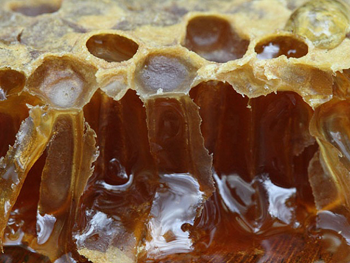

Historically, honeys came from a profusion of wildflowers, whatever grew locally. It was exceedingly uncommon to have a honey gathered from a single species of plant, such as the alfalfa or clover honeys of today, unless that plant species existed in great abundance (as was the case with heather). Because of this, the wildflower honeys that humans have used throughout their evolutionary history have contained trace amounts of the medicinal compounds produced by a multitude of wild plants. Honeybees show a great attraction for many strongly medicinal plants, including vitex, jojoba, elder, toadflax, balsam root, echinacea, valerian, dandelion, and wild geranium. In fact, this includes almost any flowering medicinal herb as well as the more commonly known alfalfas and clovers. These plant compounds, although present in tiny quantities, remain highly bioactive.
Honey is not just another simple carbohydrate like white sugar is. It is composed of a highly complex collection of enzymes, plant pigments, organic acids, esters, antibiotic agents, and trace minerals. Honey, in fact, contains more than seventy-five different compounds. In addition to those already listed, it contains proteins, carbohydrates, hormones, and antimicrobial compounds. One pound of non-heather honey contains 1,333 calories (compared with white sugar at 1,748 calories), 1.4 grams of protein, 23 milligrams of calcium, 73 milligrams of phosphorus, 4.1 milligrams of iron, 1 milligram of niacin, and 16 milligrams of vitamin C.
The content of each of these substances varies considerably depending on which type of plants the honey is gathered from; some types of honey may contain as much as 300 milligrams of vitamin C per 100 grams of honey.
Honey also contains vitamin A, beta-carotene, the complete complex of B vitamins, vitamin D, vitamin E, vitamin K, magnesium, sulphur, chlorine, potassium, iodine, sodium, copper, manganese, and a rich supply of live enzymes. It also contains relatively high concentrations of hydrogen peroxide, and many of the remaining substances in honey are so complex that they have yet to be identified. It has been found to possess antibiotic, antiviral, anti-inflammatory, anticarcinogenic, expectorant, antifungal, immune-stimulating, antiallergenic, laxative, antianemic, and tonic properties. Because honey increases calcium absorption in the body, it is also recommended for women in menopause to help prevent osteoporosis.
In clinical trials, honey has been found to be especially effective in treating stomach ulceration (especially if caused by Helicobacter pylori bacteria), infected wounds, severe skin ulceration, and respiratory illnesses. A Bulgarian study of 17,862 patients found that honey was effective in improving chronic bronchitis, asthmatic bronchitis, bronchial asthma, chronic and allergic rhinitis, and sinusitis.
Honey is a reliable, stable source of vitamins and minerals. Although high in vitamins, fruits and vegetables tend to lose them over time. Spinach, for instance, loses 50 percent of its vitamin-C content within twenty-four hours of picking. Honey, on the other hand, stores its vitamins indefinitely. Wildflower honeys generally have the largest overall concentration of vitamins. Single-plant honeys tend to increase concentrations of one vitamin to the detriment of others. ~ Stephen Harrod Buhner
The Sweet Golden Treat That Can Help Wipe Out Deadly MRSA
Posted By Dr. Mercola, February 20 2012, by Dr. Mercola
Honey was a conventional therapy in fighting infection up until the early 20th century, at which time its use slowly vanished with the advent of penicillin. Now the use of honey in wound care is regaining popularity again, as researchers are determining exactly how honey can help fight serious skin infections.
According to their findings, certain types of honey might be more effective than antibiotics!
After any skin injury, bacteria that live on your skin can infect and penetrate the wound site. One particularly common type of strep (Streptococcus pyogenes) can result in wounds that refuse to heal. But honey, especially the kind made by bees foraging on manuka flowers, was found to destroy these bacteria.
Scientific American recently reportedi:
"In lab tests, just a bit of the honey killed off the majority of bacterial cells — and cut down dramatically on the stubborn biofilms they formed.
It could also be used to prevent wounds from becoming infected in the first place."
According to the authors of the study,
"These findings indicate that manuka honey has potential in the topical treatment of wounds containing S. pyogenes."ii
Should You Dress Your Wounds with Honey?
As long as you use the right kind of honey, science does back up its use for wound treatment, which is especially relevant today as antibiotic-resistant bacterial infections are on the rise.
Five years ago, the FDA authorized the first honey-based medical product for use in the US. Derma Sciences uses Manuka honey for their Medihoney wound and burn dressings, which can be found online from medical supply stores. Amazon.com also sells them. These products can also be found in Great Britain, Australia, New Zealand, and Canada.
When considering using honey for the treatment of wounds, it's extremely important to understand that there's a major difference between raw honey—and especially Manuka honey, which is in a class of its own—and the highly processed "Grade A" type honey you find in most grocery stores. The latter is more akin to high fructose corn syrup, which is more likely to increase infection, and should never be used to treat topical wounds! (It also will not offer you the same health benefits as raw honey when consumed.)
Manuka honey, on the other hand, is made with pollen gathered from the flowers of the Manuka bush (a medicinal plant), and clinical trials have found this type of honey can effectively eradicate more than 250 clinical strains of bacteria, including resistant varieties such as:
- MRSA (methicillin resistant Staphylococcus aureus)
- MSSA (methicillin sensitive Staphylococcus aureus)
- VRE (vancomycin-resistant enterococci)
Compared to other types of honey, Manuka has an extra ingredient with antimicrobial qualities, called the Unique Manuka Factor (UMF). It is so called because no one has yet been able to discover the unique substance involved that gives it its extraordinary antibacterial activity. Honey releases hydrogen peroxide through an enzymatic process, which explains its general antiseptic qualities, but Active Manuka honey contains "something else" that makes it far superior to other types of honey when it comes to killing off bacteria.
The level of UMF can vary between batches, so each batch is ranked and priced accordingly. The higher the concentration of UMF, the darker, thicker, and more expensive it is.
To determine its rating, a sample of the honey batch is placed on a plate with a bacterial culture. The area where the bacterial growth stops is then measured. This area is compared to a similar area produced by a solution of phenol and water. The UMF number refers to the equivalent percentage of phenol in water, so, for example, honey with a UMF rating of 10 has the same antibacterial strength as 10 percent phenol. A rating of UMF 10 or higher is recommended for medicinal use.
Evidence Supporting Use of Honey against Infectious Bacteria
Aside from the featured study, many others confirm the soundness of using good-old-fashioned honey for the treatment of bacterial and fungal infections. For example, a 1992 study found that honey sped up the healing of caesarean sectionsiii, iv. Another study found that honey cured the intractable wounds of 59 patients, and it's been known to help heal everything from ulcers to sunburn. According to the International Journal of Lower Extremity Wounds, positive findings on honey in wound care have been reported fromv:
- 17 randomized controlled trials involving a total of 1965 participants
- Five clinical trials of other forms involving 97 participants
- 16 trials on a total of 533 wounds on experimental animals
A study published in the summer of 2009 also found that chronic rhinosinusitis sufferers might benefit from honeyvi. In 11 isolates of three separate biofilms, honey was found to be significantly more effective than commonly-used antibiotics in killing both planktonic and biofilm-grown forms of pseudomonas aeruginosa (PA) and staphylococcus aureus (SA), two important factors in chronic rhinosinusitis (CRS).
The findings may hold important clinical implications in the treatment of CRS, which affects 31 million people each year in the United States alone, and is among the three most common chronic diseases in North America.
Helpful Additions to Your Home First Aid Kit
If you're considering using honey to treat a mild burn, sunburn, or small wound at home,make sure to use either Manuka or raw honey. Like the Manuka honey, high quality RAW honey will help draw fluid away from your wound and suppress the growth of microorganisms. Part of what gives raw honey its antibacterial properties is an enzyme called glucose oxidase, which the worker bees excrete into the nectar. This enzyme releases low levels of hydrogen peroxide when the honey makes contact with your wound. A chemical reaction between the honey and the tissue also makes your wound smell good. Heated honey will destroy this perishable enzyme which is why you want to only use raw honey for this applicatin.
For your home care kit, two other natural wound dressings that offer impressive results without drugs are Duoderm and HemCon bandages. The HemCon bandages are made from a natural protein found in shrimp shells, which not only promotes clotting, but also offer an effective antibacterial barrier against microorganisms such as MRSA and VRE—two common antibiotic-resistant strains.
While the focus of this article is on the topical uses and benefits of honey, it also has numerous health benefits when consumed in moderation.
Unfortunately, bee populations are rapidly declining. Farmers are forced to import bees from other countries or truck them across the states for different seasons of produce. Toxic chemicals, genetically engineered crops, overuse of antibiotics in animals (their waste is typically used as fertilizer) and monoculture farming are likely the primary contributors to the collapse of the bees.
The collapse of bee colonies should be looked at as yet further proof of our unsustainable farming methods.
i Scientific American January 31, 2012,
ii Microbiology January 31, 2012 [Epub ahead of print],
iii Topical Application of Honey in Treatment of Abdominal Wound Disruption, Australian and New Zealand Journal of Obstetrics and Gynaecology, November 1992, Volume 32, Issue 4, pages 381â"384, Winit Phuapradit MD, Nopadol Saropala,
iv Sweet Salvation - WOUND HEALING
v The Evidence Supporting the Use of Honey as a Wound Dressing, International Journal of Lower Extremity Wounds, 2006:5;40,
vi Effectiveness of honey on Staphylococcus aureus and Pseudomonas aeruginosa biofilms, Otolaryngology Head Neck Surgery, July 2009;141(1):114-8,
BEE POLLEN
The science involving the study of Bee Pollen is known as Palynology.
Pollen is a fine to coarse powder containing the microgametophytes of seed plants, which produce the male gametes (sperm cells). It is the male reproductive part of the flower. The bee uses their combs to brush the pollen powder from her coat and legs in mid-flight. The bees push the gathered gold into their baskets, which are surrounded by a fringe of long hairs, are simply concave areas located on the outside of her tibias.
A full hive can pull in as many as 50,000 loads of pollen a day. One of the most interesting facts about bee pollen is that it cannot be synthesized in a laboratory. When researchers take away a bee's pollen-filled comb and feed her manmade pollen, the bee dies even though all the known nutrients are present in the lab-produced synthesized food. An enzyme is added to prevent germination, metabolizing the pollen for food, thus preserving the bee pollen benefit nutritionally.
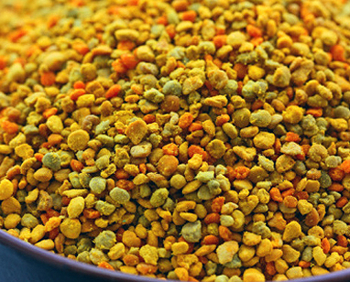

Many thousands of chemical analyses of bee pollen have been made with the very latest diagnostic equipment, but there are still some elements present in bee pollen that science cannot identify. The bees add some mysterious "extra" of their own. These unidentifiable elements may very well be the reason bee pollen works so spectacularly against so many diverse conditions of ill health.
There is a substance in bee pollen that inhibits the development of numerous harmful bacteria. It contains an antibiotic factor effective against salmonella and some strains of bacteria. On the clinical a regulatory effect on intestinal function can be attributed to bee pollen. The presence of a high proportion of cellulose and fiber in pollen, as well as the existence of antibiotic factors, contributes to its efficacious effect.
Since bee pollen derives from plant origin its chemical composition will vary somewhat depending on plant source, season and geographic location. Approximately 50% of its structure comprises polysaccharides (carbohydrates), followed by 35% amino acids and proteins, 2% fatty acids and 3% minerals and vitamins.
Pollen contains over 5,000 enzymes and co-enzymes, far more than is naturally present in any other food, and it also contains all 8 essential amino acids (cannot be synthesized by humans and therefore must be supplied in our diet) & 15 nonessential amino acids.
Bee pollen is denser in protein than any source from animals―up to 5 times more protein than meat. This can provide a much safer source of protein without the worry of high intakes of saturated fats (not to mention the numerous established links between animal proteins and cancer).
Bee pollen is a concentrated source of the B vitamin complex―this provides energy. This is why bee pollen products are usually marketed as energy supplements or energizers.
The vitamin B complex, along with vitamins A, C, D, E, selenium, lecithin and powerful phytochemicals (carotenoids and bioflavonoids) make bee pollen a potent source of antioxidants.
The various therapeutic health benefits of bee pollen are believed to largely stem from the antioxidant and disease reventing/curing properties of bioflavonoids and carotenoids.
Bee Pollen
Every pollen grain has a story
For additional information, See Bee Pollen Secrets
Chemical Composition of Bee Pollen
From "Bee Pollen, Royal Jelly, Propolis and Honey", by Rita Elkins, M.A.
|
Amino Acids (per 100 parts) |
|
|
arginine |
4.7 parts |
|
histidine |
1.5 parts |
|
isoleucine |
4.7 parts |
|
leucine |
5.6 parts |
|
methionine |
1.7 parts |
|
phenylaline |
3.5 parts |
|
threonine |
4.6 parts |
|
tryptophan |
1.6 parts |
|
valine |
6.0 parts |
|
glutamic acid |
9.1 parts |
|
Vitamins (per 1,000 milligrams of Bee Pollen) |
|
|
Thiamine (vitamin B-1) |
9.2 mg |
|
Riboflavin (vitamin B-3) |
18.50 mg |
|
Niacinamide (vitamin B-3) |
200 mg |
|
Pyridoxine (vitamin B-6) |
5 mg |
|
Pantothenic acid (vitamin B-5) |
30-5 mg |
|
Folic acid |
3.64-6.8 mg |
|
Lactoflavin |
|
|
Vitamin A (carotenoids) |
.5-.9 mg |
|
Vitamin C |
7-15 mg |
|
Vitamin E |
Trace /td> |
|
Minerals (per 1,000 milligrams of Bee Pollen) |
|
|
Potassium |
600 mg |
|
Other Minerals |
|
|
magnesium |
1%-12% |
|
calcium |
1%-15% |
|
copper |
.05%-.08% |
|
iron |
.01%-.30% |
|
silica |
2%-10% |
|
phosphorus |
1%-20% |
|
sulfur |
1% |
|
chlorine |
1% |
|
manganese |
1.4% |
Bee Pollen also contains 17 percent of rutin (vitamin P).
Hormones
- Gonadotropic and Estrogenic
- HGH (human growth hormone factor)
Honeybees as Pollinators
Honeybees are the most important pollinators in most regions of the world where flowering plants exist, but are by no means the only insects that play this role. Flies, butterflies, beetles and other hymenopterans related to bees, such as solitary bees, wasps, bumblebees, and even ants can pollinate plants. Very few flowers are dependent on a single insect species, although no other pollinators are as effective as are honeybees.
In all, 80% of flowering plants worldwide are pollinated by insects, and of these about 85% by honeybees. As many as 90% of fruit tree flowers are dependent on honeybees. The list of flowering plants pollinated by honeybees includes about 170,000 species. The number of flowering plant species that are dependent on honeybees, and without which they would fare badly, is estimated to be about 40,000.
This worldwide sea of flowers is pollinated by just nine species, and in Europe and Africa by only one, which is indispensable for most flowering plants. This extreme numerical imbalance between plant clients and pollinators is remarkable, and suggests that honeybees are so successful in this area as to leave little room for the coexistence of similarly occupied competitors.
Honeybees account for about 33% of food that it is produced in America. They pollinate about 100 of our most important crops, fruits, vegetables, nuts, seed, even fibers like cotton. In the USA alone the value of their services exceeds 15 Billion Dollars.
Monoculture farming leaves us highly dependent on honeybees, whose pollination affects 75% of fruits and vegetables and 30% of all food production. However, managed hives are being wiped out by colony collapse disorder at an alarming rate. In the following video. Claire Kremen (Associate Professor, PhD Zoology Duke University, 1987, B.S. Biology Stanford University, 1982) discuses how wild bees can boost the effectiveness of managed hives and play a critical role in pollinating the crops that keep California's economy humming. ~ The Commonwealth Club of California
Why We Got Rid Of Our Bees? Honey Bee Crisis!
The Critical Importance of Pollinators
Why are bees important?
Honey Bees Back Yard Beekeeping Made Simple
BEE ROYAL JELLY
Information from Wikipedia
Royal jelly is secreted from the glands in the heads of worker bees, and fed to bee larvae. After a few days, the larvae that have potential to develop into queens continue to be fed this nectar. It is harvested by stimulating colonies with movable frame hives to produce queen bees. Royal jelly is collected from each individual queen cell (honeycomb) when the queen larvae are about four days old. It is collected from queen cells because these are the only cells in which large amounts are deposited; when royal jelly is fed to worker larvae, it is fed directly to them, and they consume it as it is produced, while the cells of queen larvae are "stocked" with royal jelly much faster than the larvae can consume it. Therefore, only in queen cells is the harvest of royal jelly practical.

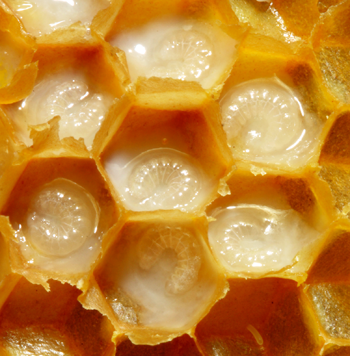
Royal jelly is composed of 60 to 70 percent water, 12 to 15 percent protein, 10 to 16 percent sugars, and 3 to 6 percent fats, with vitamins, salts, and free amino acids making up the rest.
Royal jelly is collected and sold as a dietary supplement, claiming various health benefits because of components like B-complex vitamins such as pantothenic acid (vitamin B5) and vitamin B6 (pyridoxine). The overall composition of royal jelly is 67% water, 12.5% crude protein (including small amounts of many different amino acids), and 11% simple sugars (monosaccharides), also including a relatively high amount (5%) of fatty acids. It also contains many trace minerals, some enzymes, antibacterial and antibiotic components, and trace amounts of vitamin C. The fat-soluble vitamins, A, D, E and K, are completely absent from royal jelly.
The honeybee queens and workers represent one of the most striking examples of environmentally controlled phenotypic polymorphism. In spite of their identical, clonal nature at the DNA level they are strongly differentiated across a wide range of characteristics including anatomical and physiological differences, the longevity of the queen and reproductive capacity. Queens constitute the sexual caste and have large active ovaries, whereas workers have only rudimental inactive ovaries and are functionally sterile. The queen/worker developmental divide is controlled epigenetically by differential feeding with royal jelly. A female larva destined to become a queen is fed large quantities of royal jelly that triggers a cascade of molecular events resulting in queen development. It has been shown that this phenomenon is mediated by an epigenetic modification of DNA known as CpG methylation. Silencing the expression of an enzyme that methylates DNA in newly hatched larvae led to a royal jelly-like effect on the larval developmental trajectory; the majority of individuals with reduced DNA methylation levels emerged as queens with fully developed ovaries. This finding suggests that DNA methylation in honeybees is used for storing epigenetic information that can be differentially altered by nutritional input.
Royal jelly has been reported as a possible immunomodulatory agent in Graves' disease. It has also been reported to stimulate the growth of glial cells[9] and neural stem cells in the brain. To date, there is preliminary evidence that it may have some cholesterol-lowering, anti-inflammatory, wound-healing, and antibiotic effects, though the last three of these effects are unlikely to be realized if ingested (due to the destruction of the substances involved through digestion, or neutralization via changes in pH). Research also suggests that the 10-Hydroxy-2-decenoic acid (10-HDA) found in royal jelly may inhibit the vascularization of tumors. There are also some preliminary experiments (on cells and lab animals) in which royal jelly may have some benefit regarding certain other diseases, though there is no solid evidence for those claims, and further experimentation and validation would be needed to prove any useful benefit.
Royal Jelly is a Anti-Aging supplement and must more
Royal jelly can also be found in some beauty products.
Royal jelly may cause allergic reactions in humans ranging from hives, asthma, to even fatal anaphylaxis. The incidence of allergic side effect in people that consume royal jelly is unknown. However, it has been suggested that the risk of having an allergy to royal jelly is higher in people who already have known allergies.
BEE PROPOLIS
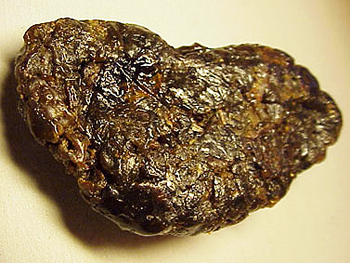
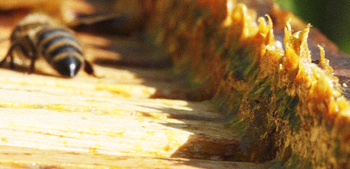
Bees create propolis from natural resins from trees and plants, to build their hives. Propolis is made from the buds of conifer and poplar trees, beeswax, and other bee secretions. Bees use it as a natural antibiotic to protect their hive and as defence against disease in the hive. They do this by using it as a seal over foreign matter so that it does not pollute the hive as well as for creating doorways. It is made up of waxes, resins, fatty acids and amino acids. Historically, propolis was used in Greece to treat abscesses. The Assyrians also used propolis to heal wounds and tumors, while the Egyptians used it for mummification.
Bee propolis is a remarkable natural substance collected and produced by honeybees. It is often referred to as a natural antibiotic and has many diverse uses. Bee propolis has been described as having anti-bacterial, anti-viral, anti-fungal, anti-inflammatory and even anti-cancer properties with immune modulating effects. Propolis is exceedingly complex which is why no one has attempted to synthesise the product.
Propolis has shown promise in dentistry for dental caries and as a natural sealant and enamel hardener. The effectiveness of propolis against herpes simplex virus types 1 and 2 and parasitic infections has been demonstrated in early studies.
Therapeutic effect of Propolis
Propolis, a natural beehive product has been known for centuries for a variety of beneficial traditional medicinal properties. The present study was conducted to ascertain the antineoplastic potential of propolis along with paclitaxel against experimental mammary carcinogenesis. Female Sprague Dawley rats at 55 days of age were treated with dimethylbenz(a)anthracene to induce breast cancer. Paclitaxel at a dose of 33 mg/kg body mass intraperitoneally and propolis 50 mg/kg body weight orally was administered to the experimental animals, immediately after the carcinogen treatment and continued until the termination of the study.
At the end of the treatment activities of phase I and II xenobiotic metabolizing enzymes and liver marker enzymes were measured. A significant increase in carcinogen activating enzymes, cytochrome P"4"5"0, cytochrome b"5 and NADPH cytochrome C reductase with concomitant decrease in phase II enzymes, glutathione transferase and UDP-glucuronyl transferase were observed in animals with mammary cancer. Furthermore there was a significant decrease in alanine aminotransferase, aspartate aminotransferase with a sharp increase in alkaline phosphatase, acid phosphatase and 5' nucleotidase. Propolis treatment caused the activity of these enzymes return to almost normal control levels, indicating the protective effect of propolis against dimethyl benz(a) anthracene induced carcinogenesis.
On the basis of the observed results propolis can be considered a promising chemotherapeutic agent and can be administered as an adjuvant with paclitaxel chemotherapy. ~ Therapeutic effect of propolis and paclitaxel on hepatic phase I and II enzymes and marker enzymes in dimethylbenz(a)anthracene-induced breast cancer in ... Biochemistry and Physiology, Part C, Padmavathi, Senthilnathan, Sakthisekaran.
BEE PROPOLIS
Propolis Boost Immune Response
Apitherapy News, Sunday, April 17, 2011
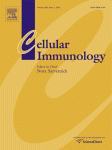
The Immune Enhancement of Propolis Adjuvant on Inactivated
Porcine Parvovirus Vaccine in Guinea Pig
(Cell Immunol, 2011 Apr 9)
Two experiments were carried out. In immune response test, the immune enhancement of propolis, oilemulsion and aluminium salt were compared in guinea pig vaccinated with inactivated porcine parvovirus (PPV) vaccine.
The result showed that three adjuvants could enhance antibody titer, T lymphocyte proliferation, IL-2 and IL-4 secretion of splenic lymphocyte. The action of propolis was similar to that of oilemulsion and superior to that of aluminium salt, especially in early period of vaccination propolis could accelerate antibody production.
In immune protection test, the effects of three adjuvants on PPV infection were compared in guinea pig vaccinated with PPV vaccine then challenged with PPV. The result showed that propolis and oilemulsion could enhance the antibody titer, IL-2 and IL-4 content in serum and decrease the PPV content in blood and viscera. In the effect of improving cellular immune response, the propolis was the best.
These results indicated that propolis possessed better immune enhancement and would be exploited into a effective adjuvant of inactivated vaccine.
Propolis Restores Adiponectin Expression and Insulin Sensitivity
Apitherapy News, Sunday, April 29, 2011
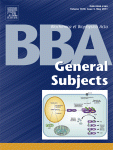
Brazilian Propolis-Derived Components Inhibit TNF-α-Mediated Downregulation of Adiponectin Expression Via Different Mechanisms in 3T3-L1 Adipocytes
(Biochim Biophys Acta, 2011 Apr 29)
Background: Previous reports suggest that Brazilian propolis has multiple biological functions and may help to restore adiponectin expression and insulin sensitivity. However, little is known about the molecular mechanisms by which these compounds inhibit the downregulation of adiponectin.
Methods: The effect of various Brazilian propolis-derived components on inhibition of tumor necrosis factor-α (TNF-α)-mediated downregulation of adiponectin expression in 3T3-L1 adipocytes and molecular mechanism was investigated.
Results and Conclusions: Pretreatment with either artepillin C (C3) or its derivative (C4) significantly inhibited TNF-α-mediated downregulation of adiponectin expression in 3T3-L1 adipocytes. Interestingly, C3 strongly activated peroxisome proliferator-activated receptor γ (PPARγ) transcriptional activity. Treatment of adipocytes with C3 resulted in the upregulation of adiponectin and fatty acid-binding protein 4 expression, but C4 did not significantly induce PPARγ transactivation. C4 did, however, inhibit the TNF-α-induced c-Jun-NH(2)-terminal kinase (JNK) signaling that is involved in adiponectin expression. Molecular docking studies based on hPPARγ with C3 and JNK1 with C4 clearly supported our experimental results. These data demonstrate that 1) both C3 and C4 significantly inhibit the TNF-α-mediated downregulation of adiponectin in adipocytes, 2) C3 functions as a PPARγ agonist, and its inhibition of the effect of TNF-α is due to this PPARγ transactivation, and 3) C4 is an effective inhibitor of JNK activation, thus inhibiting the TNF-α-mediated downregulation of adiponectin.
General Significance: Brazilian propolis-derived components (C3 and C4) can significantly inhibit TNF-α-mediated downregulation of adiponectin in adipocytes, although they do so via different mechanisms.
Propolis May Help Prevent Damage to Kidneys
Apitherapy News, Sunday, May 1, 2011
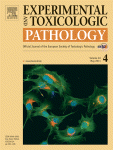
Propolis Attenuates Cobalt Induced-Nephrotoxicity in
Adult Rats and Their Progeny
(Experimental and Toxicologic Pathology, Article in Press)
The aim of this study was to evaluate the biochemical changes in cobalt-exposed rats and to investigate the potential role of Tunisian propolis against the cobalt-induced renal damages.
Twenty-four pregnant Wistar rats were divided into four groups and were treated as follows: group 1 (control) received distilled water; group 2 received 350 ppm of CoCl2 in drinking water; group 3 received 350 ppm CoCl2 in drinking water and a propolis-supplemented diet (1 g/100 g of diet); group 4 received a propolis-supplemented diet (1 g/100 g of diet) without cobalt. In the cobalt group, a significant decrease in body, absolute and relative weights was noted when compared to controls.
The administration of cobalt to pregnant rats from the 14th day of pregnancy until day 14 after delivery resulted in an increased level of renal malondialdehyde, a decreased renal content of glutathione and antioxidant enzyme activities such as superoxide dismutase, catalase and glutathione peroxidase in lactating rats and their pups.
A statistically significant increase in plasma urea and creatinine serum levels was seen in treated female rats and their pups. Histopathologically, the cobalt-administration induced degenerative changes in the kidney of lactating rats and their pups.
When compared with cobalt-treated rats, those receiving the propolis supplementation (along with cobalt-treatment) had lower malondialdehyde levels, higher antioxidant activities and the cobalt-related histopathological changes in the kidneys were at lower severity.
Our results suggested that the propolis might be a potential candidate agent against cobalt-induced nephrotoxicity in adult and juvenile rats when administered to female rats during the late pregnancy and the early postnatal period.
Propolis Component May Help Slow or Preventing Progression of Parkinson's Disease
Apitherapy News, Wednesday, May 11, 2011
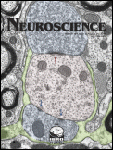
Caffeic Acid Phenethyl Ester Prevents 1-Methyl-4-phenyl-1,2,3,6-tetrahydropyridine-induced NeurodegenerationNeuroscience
(Neuroscience, Article in Press)
Parkinson's disease is associated with the loss of dopaminergic neurons in the substantia nigra and decreased striatal dopamine levels. We now report that caffeic acid phenethyl ester (CAPE), an active component of propolis, attenuated dopaminergic neurodegeneration and dopamine loss in the MPTP mouse model of Parkinson's disease.
The neuroprotective effect of CAPE was associated with marked reductions in iNOS and caspase 1 expression. Additionally, CAPE inhibited MPP+-induced neurotoxicity in vitro and directly inhibited MPP+-induced release of cytochrome c and apoptosis inducing factor (AIF) from mitochondria.
Thus, CAPE may have beneficial effects in slowing or preventing the progression of Parkinson's disease and other neurodegenerative disorders.
Propolis Can Help Treat Oral Cavity Infections
Apitherapy News, Wednesday, May 13, 2011

In vitro Antimicrobial Activity of Propolis, BioPure MTAD, Sodium Hypochlorite, and Chlorhexidine on Enterococcus faecalis and Candida albicans
(Saudi Med J, 2011 May;32(5):479-83)
Objectives: To evaluate the antimicrobial effect by measuring the minimum inhibitory concentration MIC and minimum bactericidal concentration MBC of propolis, BioPure MTAD, 5% sodium hypochlorite (NaOCl), and 2% chlorhexidine CHX on Enterococcus faecalis (E. faecalis) and Candida albicans (C. albicans) in vitro.
Methods: This study was performed in the Faculty of Dentistry and Pharmacy at Erciyes University, Kayseri, Turkey from February to April 2010. Ethanol extract of propolis (EEP) was prepared from propolis collected from Kayseri, Turkey, and proper media for microorganisms were prepared using sterile broth medium to give final concentrations between 0.002-2.4 mg/ml for propolis, 0.000125-0.512 mg/ml for CHX, and 1:2-1:4096 dilutions for NaOCl and BioPure MTAD. Using the macrobroth dilution method, MIC, and MBC values of irrigants on the growth of E. faecalis and C. albicans were determined.
Results: Propolis and other irrigants were found to be effective on C. albicans and E. faecalis. Propolis and NaOCl were more effective in lower concentrations on C. albicans than on E. faecalis. In contrast, CHX and MTAD were more effective in lower concentrations on E. faecalis than on C. albicans.
Conclusions: Propolis showed antimicrobial activity against E. faecalis and C. albicans. It appears that propolis is an effective intracanal irrigant in eradicating E. faecalis and C. albicans.
Propolis Component Inhibits Breast Cancer Tumor Growth
Apitherapy News, Wednesday, May 16, 2011
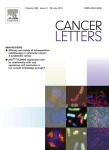
Caffeic Acid Phenethyl Ester (CAPE), Derived from a Honeybee Product Propolis, Exhibits a Diversity of Anti-Tumor Effects in Pre-Clinical Models of Human Breast Cancer
(Cancer Letters, Article in Press)
Breast cancer (BC) patients use alternative and natural remedies more than patients with other malignancies. Specifically, 63–83% use at least one type of alternative medicine and 25–63% use herbals and vitamins.
Propolis is a naturopathic honeybee product, and CAPE (caffeic acid phenethyl ester), is a major medicinal component of propolis. CAPE, in a concentration dependent fashion, inhibits MCF-7 (hormone receptor positive, HR+) and MDA-231 a model of triple negative BC (TNBC) tumor growth, both in vitro and in vivo without much effect on normal mammary cells and strongly influences gene and protein expression.
It induces cell cycle arrest, apoptosis and reduces expression of growth and transcription factors, including NF-κB. Notably, CAPE down-regulates mdr-1 gene, considered responsible for the resistance of cancer cells to chemotherapeutic agents. Further, CAPE dose-dependently suppresses VEGF formation by MDA-231 cells and formation of capillary-like tubes by endothelial cells, implicating inhibitory effects on angiogenesis.
In conclusion, our results strongly suggest that CAPE inhibits MDA-231 and MCF-7 human breast cancer growth via its apoptotic effects, and modulation of NF-κB, the cell cycle, and angiogenesis.
Propolis Prevents Liver Damage
Apitherapy News, Tuesday, August 16, 2011
Propolis Prevents Hepatorenal Injury Induced by Chronic Exposure to Carbon Tetrachloride
Evid Based Complement Alternat Med, 2012;2012:235358. Epub 2011 Aug 4
Carbon tetrachloride (CCl(4)) is a well-known hepatotoxicant, and its exposure induces hepatorenal injury via oxidative stress and biochemical alterations. This study had been conducted to confirm the protective role of propolis extract on CCl(4)-induced hepatorenal oxidative stress and resultant injury.
Propolis extracts collected from Gwalior district and 24 female Sprague Dawley rats were used for experiment. Animals were exposed to CCl(4) (0.15 mL/kg, i.p.) for 12 weeks (5 days/week) followed by treatment with propolis extract (200 mg/kg, p.o.) for consecutive 2 weeks. CCl(4) exposure significantly depleted blood sugar and hemoglobin level and raised the level of transaminases, alkaline phosphatase, lactate dehydrogenase, protein, urea, albumin, bilirubin, creatinine, triglycerides, and cholesterol in serum. Lipid peroxidation was enhanced, whereas GSH was decreased significantly in liver and kidney in CCl(4)-intoxicated group.
Ethanolic extract of propolis successfully prevented these alterations in experimental animals. Activities of catalase, adenosine triphosphatase, glucose-6-phosphatase, acid, and alkaline phosphatase were also maintained towards normal with propolis therapy. Light microscopical studies showed considerable protection in liver and kidney with propolis treatment, thus, substantiated biochemical observations.
This study confirmed hepatoprotective potential of propolis extract against chronic injury induced by CCl(4) by regulating antioxidative defense activities.
Propolis suppresses Prostate and other Cancers
Cancer Prevention Research
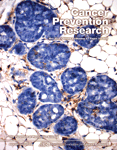
Caffeic Acid Phenethyl Ester Suppresses the Proliferation of Human Prostate Cancer Cells through Inhibition of p70S6K and Akt Signaling Networks
Chih-Pin Chuu, Hui-Ping Lin, Mark F. Ciaccio, John M. Kokontis, Ronald J. Hause, Jr, Richard A. Hiipakka, Shutsung Liao, and Richard Baker Jones
Corresponding Author:
Richard Baker Jones, The University of Chicago, 900 East 57th Street, KCBD Room 10118, Chicago, IL 60637.
Abstract
Caffeic acid phenethyl ester (CAPE) is a bioactive component derived from honeybee hive propolis. CAPE has been shown to have antimitogenic, anticarcinogenic, and other beneficial medicinal properties. Many of its effects have been shown to be mediated through its inhibition of NF-κB signaling pathways. We took a systematic approach to uncover the effects of CAPE from hours to days on the signaling networks in human prostate cancer cells. We observed that CAPE dosage dependently suppressed the proliferation of LNCaP, DU-145, and PC-3 human prostate cancer cells. Administration of CAPE by gavage significantly inhibited the tumor growth of LNCaP xenografts in nude mice. Using LNCaP cells as a model system, we examined the effect of CAPE on gene expression, protein signaling, and transcriptional regulatory networks using micro-Western arrays and PCR arrays. We built a model of the impact of CAPE on cell signaling which suggested that it acted through inhibition of Akt-related protein signaling networks. Overexpression of Akt1 or c-Myc, a downstream target of Akt signaling, significantly blocked the antiproliferative effects of CAPE. In summary, our results suggest that CAPE administration may be useful as an adjuvant therapy for prostate and potentially other types of cancers that are driven by the p70S6K and Akt signaling networks. Cancer Prev Res; 5(5); 788–97. ©2012 AACR.
Stan Scheller: The Forerunner of Clinical Studies on Using Propolis for Poor and Chronic Nonhealing Wounds
By Ross Densley 08/11/09

Abstract
For hundreds of years poor and chronic nonhealing wounds have constituted a serious problem to medicine. What is more, treating such wounds is an expensive let alone a long-lasting process. The following paper describes Professor Scheller's achievements in using propolis for poor and chronic non-healing wounds. The authors' intention was to present the results connected with the use of the ethanolic extract propolis, in the treatment of patients suffering from burns, venous crural ulceration, local sacral bone pressure ulcers, suppurative osteitis and arthritis, suppurative postoperative local wound complications, and infected traumatic wounds.
Propolis Proven Effective Against Leukaemia
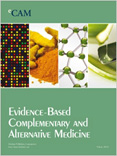
Propolis, the protector of the beehive, also provides protection for many living species and is by far the most important product from honey bees. That's why you'll find it used in many applications, from balms to ovules and creams to vaporizers. The anticancer effects are complementary and enhance the effects of allopathic treatments such as chemotherapy against multiple cancer cells.
Polyphenols as Key Players for the Antileukaemic Effects of Propolis
Evid Based Complement Alternat Med, 2014, March
Propolis (a bee product) which has a long history of medicinal use by humans has attracted a great deal of research interest in the recent time; this is due to its widely reported biological activities such as antiviral, antifungal, antibacterial, anti-inflammatory, antioxidant, and anticarcinogenic properties.
Crude form of propolis and its phenolic contents have both been reported to exhibit antileukaemic effects in various leukaemia cell lines. The ability of the polyphenols found in propolis to arrest cell cycle and induce apoptosis and differentiation in addition to inhibition of cell growth and proliferation makes them promising antileukaemic agents, and hence, they are believed to be a key to the antileukaemic effects of propolis in different types of leukaemia.
This paper reviews the molecular bases of antileukaemic activity of both crude propolis and individual polyphenols on various leukaemia cell lines, and it indicates that propolis has the potential to be used in both treatment and prevention of leukaemia. This however needs further evaluation by in vitro, in vivo, and epidemiological studies as well as clinical trials.
It is also suggested that the use of propolis in combination with honey for prevention and treatment of many ailments including malignancies as practiced traditionally should be further elucidated.
BEE SWARM
In the spring honeybees swarm dividing the colony in their natural process to propagate and insure that there race will continue to survive. The bee worker (female bees) knows when to construct bee queen cells and start feeding the larva a different food combination, including more quantity of Royal Jelly. This results in a series of honeybee cells containing new bee queens. That's right, only a change in food will result in a different bee evolution.
Understanding Honey Bee Swarms
Once the new queen larva mature enough, the bee colony will divide. The swarm consists of approximately half of the hives population and the departing group swarms out, headed by the current bee queen, in search of a new home.
A honeybee colony can only have one(1) queen. Once the swarm is gone the first queen that emerges from its cell will kill the remaining queen larva.
Honey Bee Swarm Leaving a Hive
Please contact us for Bee therapy, classes and training information.
Disclaimer: Please remember that One-on-One sessions in person or distant healing are not a substitute for professional care or psychiatric help if that is what is needed. Many physicians and psychologists recommend meditation in conjunction with standard therapies.
